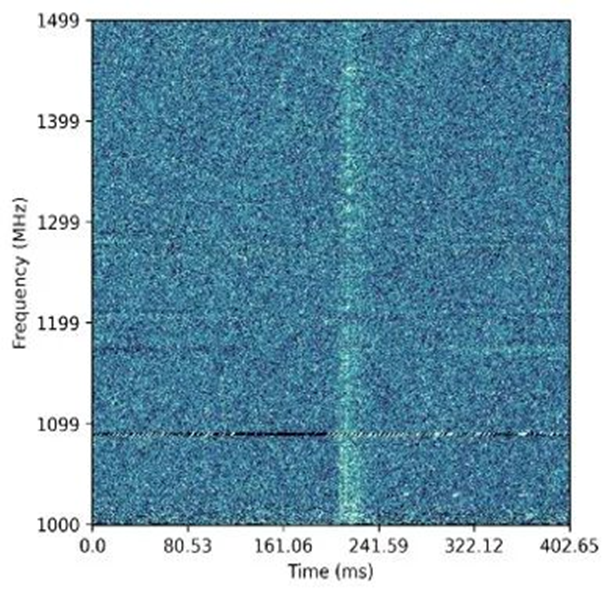

Recently, the computational astronomy team of Zhejiang Lab (ZJ Lab) discovered a new pulsar using FAST observation data on May 18, 2023.
Pulsar, an extremely dense object, is formed when stars with 8-25 solar masses reach the end of their lives and undergo a powerful supernova, and has a neutron star at its center that results from the collapse of a star with about one solar mass, with a density of approximately a quadrillion times water density. Pulsars emit radiation from their highly magnetic polar cap, and the signals are seen when the polar cap rotates earthwards. By observing these signals from pulsars, we can detect the distribution and density of the interstellar medium, as well as the distribution and intensity of magnetic fields in the Milky Way. In addition, scientists are also exploring ways to use pulsars for timing and gravitational waves detection.
However, searching for pulsars in the universe isn't easy. Patrolling the vast sky day and night, FAST picks up electromagnetic signals from the universe at a data rate of about 1.6GB per second and up to 144TB per day. The pulsar's signal is hidden inside.
Traditionally, researchers need to process these data through de-dispersion and matched filter to obtain graphical results from pulsar candidate data, and then identify the real pulsar signals with the naked eye.
"The traditional search algorithm breaks up a search task into multiple subtasks, requiring large-scale storage throughput and computation, and generating a huge number of candidates. This results in a relatively low efficiency," said CHEN Huaxi, a senior engineering expert at the Research Center for Intelligent Computing Platforms. For example, it takes 476 days for a GPU to process about 34TB of single-satellite orbit survey data with traditional algorithms, generating about 1 million candidates.
"Leveraging ZJ Lab's intelligent computing astronomical platform (FAST@ZJLAB), we have performed training and tuning by combining AI algorithms such as target recognition and image classification with astronomical radio signal processing knowledge, and created the astronomical knowledge-driven AI algorithm. This improves the computational efficiency by 17 times and the candidate screening efficiency by about 2,500 times," CHEN Huaxi said.
Using this algorithm, members of the computational astronomy team, including JIN Chenwu, MIAO Chenchen and others, processed about 172TB of data from five observations in the Commensal Radio Astronomy FAST Survey (CRAFTS), taking 170 hours to find more than 4,000 candidates. In addition, they found the new pulsar PSR J0104+6027 among these candidates.

Signals from Pulsar PSR J0104+6027
"Searching for pulsars is just like "digging ores". In the past, we used to dig ores with hoes, which was shallow and slow. By contrast, AI and intelligent computing facilitate the search process, and it's like replacing hoes with large mechanized tools, so that we can dig ores well and quickly, and discover hidden underground treasures faster and more accurately," MIAO Chenchen said. As more pulsars have been discovered and their physical properties have been further studied, we can perform a more complete statistical analysis of spatial distribution and evolution to gradually reveal their mysteries.
At present, FAST@ZJLAB has integrated 17 intelligent algorithms, built scientific databases such as BlinkVerse (blinkverse.alkaidos.cn) and ChemiVerse in the fields of fast radio burst (FRB) and astrochemistry, and established a stable transmission channel with FAST. The platform has put about 5.6PB of data in place. In the future, with the further improvement of the platform and the further aggregation of data, more astronomical discoveries will be spawned and more blockbuster achievements will be produced.
References:Scientific Goals of FAST: Observation and Research Significance of Pulsars
"Blinking" Stars: Exploring Pulsars










